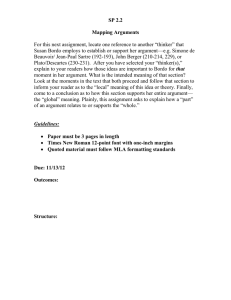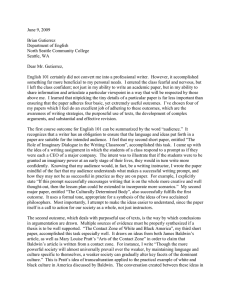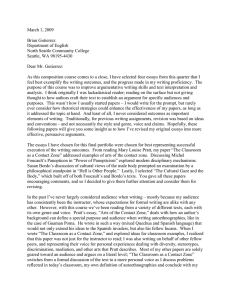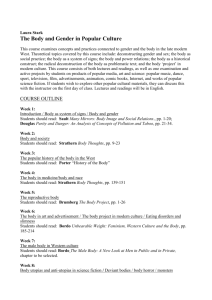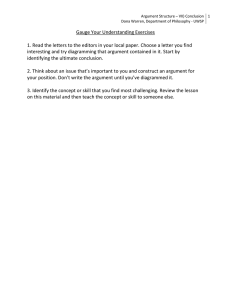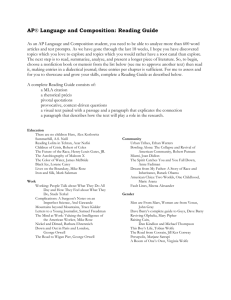Major Paper #2 The Gaze and the Culturally Determined Body
advertisement
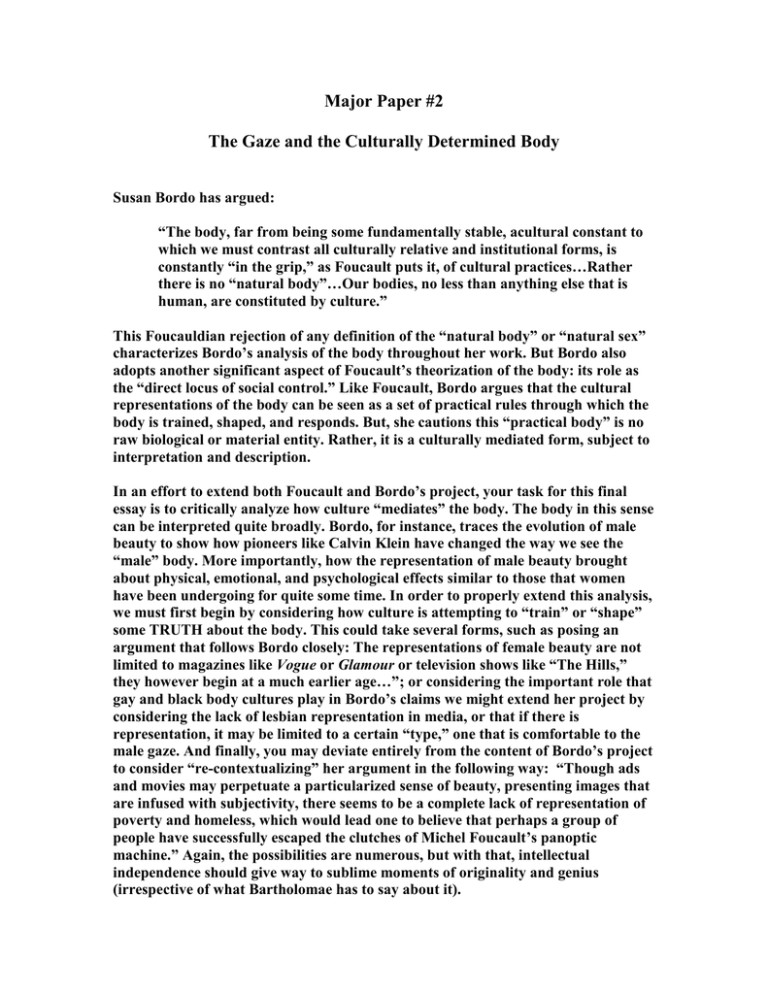
Major Paper #2 The Gaze and the Culturally Determined Body Susan Bordo has argued: “The body, far from being some fundamentally stable, acultural constant to which we must contrast all culturally relative and institutional forms, is constantly “in the grip,” as Foucault puts it, of cultural practices…Rather there is no “natural body”…Our bodies, no less than anything else that is human, are constituted by culture.” This Foucauldian rejection of any definition of the “natural body” or “natural sex” characterizes Bordo’s analysis of the body throughout her work. But Bordo also adopts another significant aspect of Foucault’s theorization of the body: its role as the “direct locus of social control.” Like Foucault, Bordo argues that the cultural representations of the body can be seen as a set of practical rules through which the body is trained, shaped, and responds. But, she cautions this “practical body” is no raw biological or material entity. Rather, it is a culturally mediated form, subject to interpretation and description. In an effort to extend both Foucault and Bordo’s project, your task for this final essay is to critically analyze how culture “mediates” the body. The body in this sense can be interpreted quite broadly. Bordo, for instance, traces the evolution of male beauty to show how pioneers like Calvin Klein have changed the way we see the “male” body. More importantly, how the representation of male beauty brought about physical, emotional, and psychological effects similar to those that women have been undergoing for quite some time. In order to properly extend this analysis, we must first begin by considering how culture is attempting to “train” or “shape” some TRUTH about the body. This could take several forms, such as posing an argument that follows Bordo closely: The representations of female beauty are not limited to magazines like Vogue or Glamour or television shows like “The Hills,” they however begin at a much earlier age…”; or considering the important role that gay and black body cultures play in Bordo’s claims we might extend her project by considering the lack of lesbian representation in media, or that if there is representation, it may be limited to a certain “type,” one that is comfortable to the male gaze. And finally, you may deviate entirely from the content of Bordo’s project to consider “re-contextualizing” her argument in the following way: “Though ads and movies may perpetuate a particularized sense of beauty, presenting images that are infused with subjectivity, there seems to be a complete lack of representation of poverty and homeless, which would lead one to believe that perhaps a group of people have successfully escaped the clutches of Michel Foucault’s panoptic machine.” Again, the possibilities are numerous, but with that, intellectual independence should give way to sublime moments of originality and genius (irrespective of what Bartholomae has to say about it). When “testing” the validity of your claim make sure that you are doing one or more of the following: 1. Does your argument use some form of media as support? (Ex: “video games perpetuate a misogynistic ideology”) 2. Does your argument consider how images or even a collection of images trains us to believe a certain truth (Ex: The articles, ads, and images in FHM instruct, train, and shape the reader’s “perception”…) 3. Does your argument narrow the focus to a particular group of people? 4. Does your argument suggest an issue that NEEDS to be brought to the reader’s attention--what is the moral/ethical/social imperative? 5. Does your argument include (explicitly) the ideas from BOTH authors? 6. Is your argument clearly shaped by your perception of the world, but done so in an objective, scientific manner, not as an uninformed opinionated rant: (Ex: If we compare the retail stores and the products represented and sold at that mall, then when comparing Northgate Mall and University Village several assumptions can be made based on X,Y,Z factors). Guidelines: Paper must be 5-7 pages in length 12-point font with one-inch margins Quoted material must follow MLA format Rough Draft Due: 11/21 Final Draft Due: 12/5
